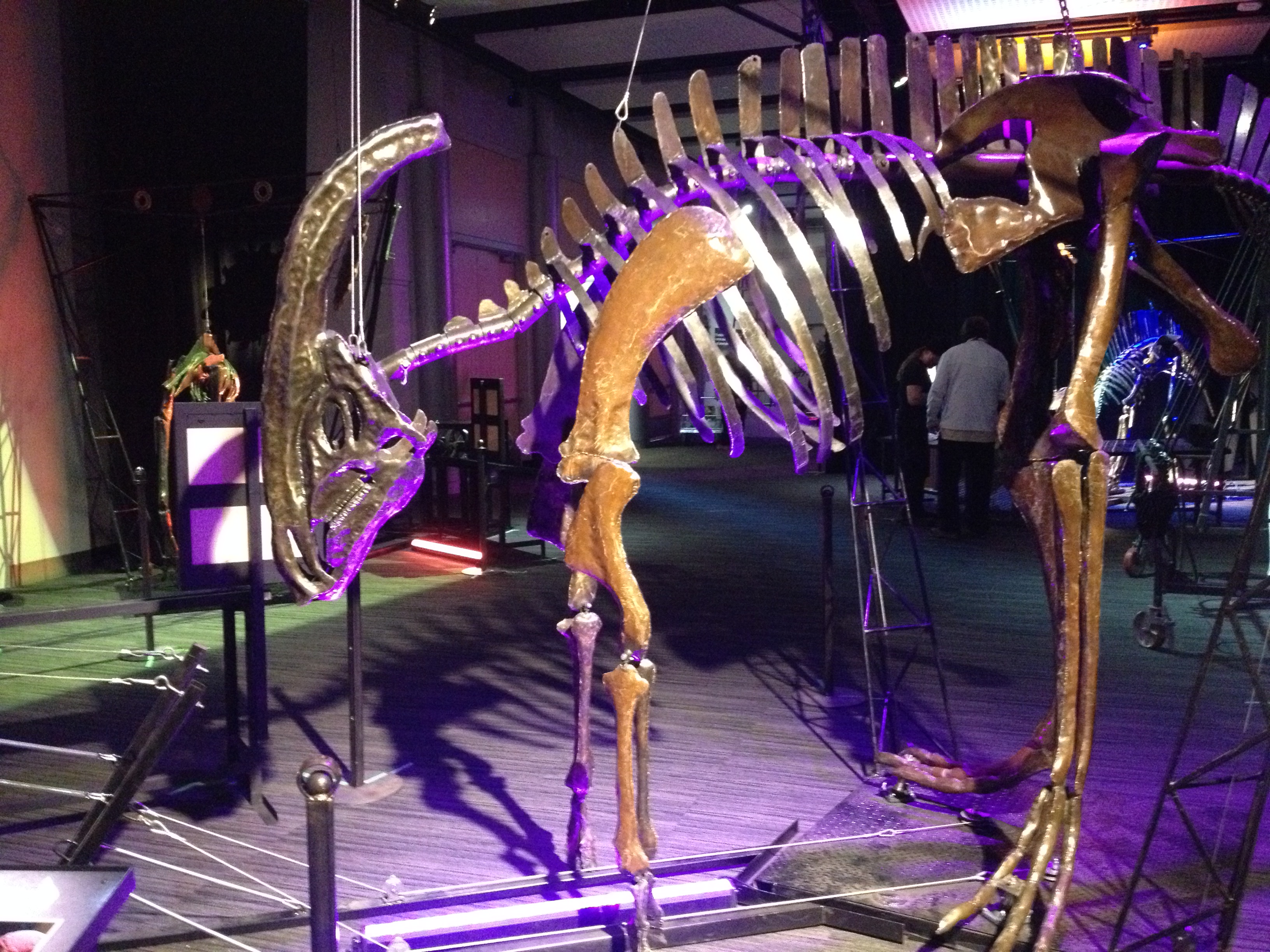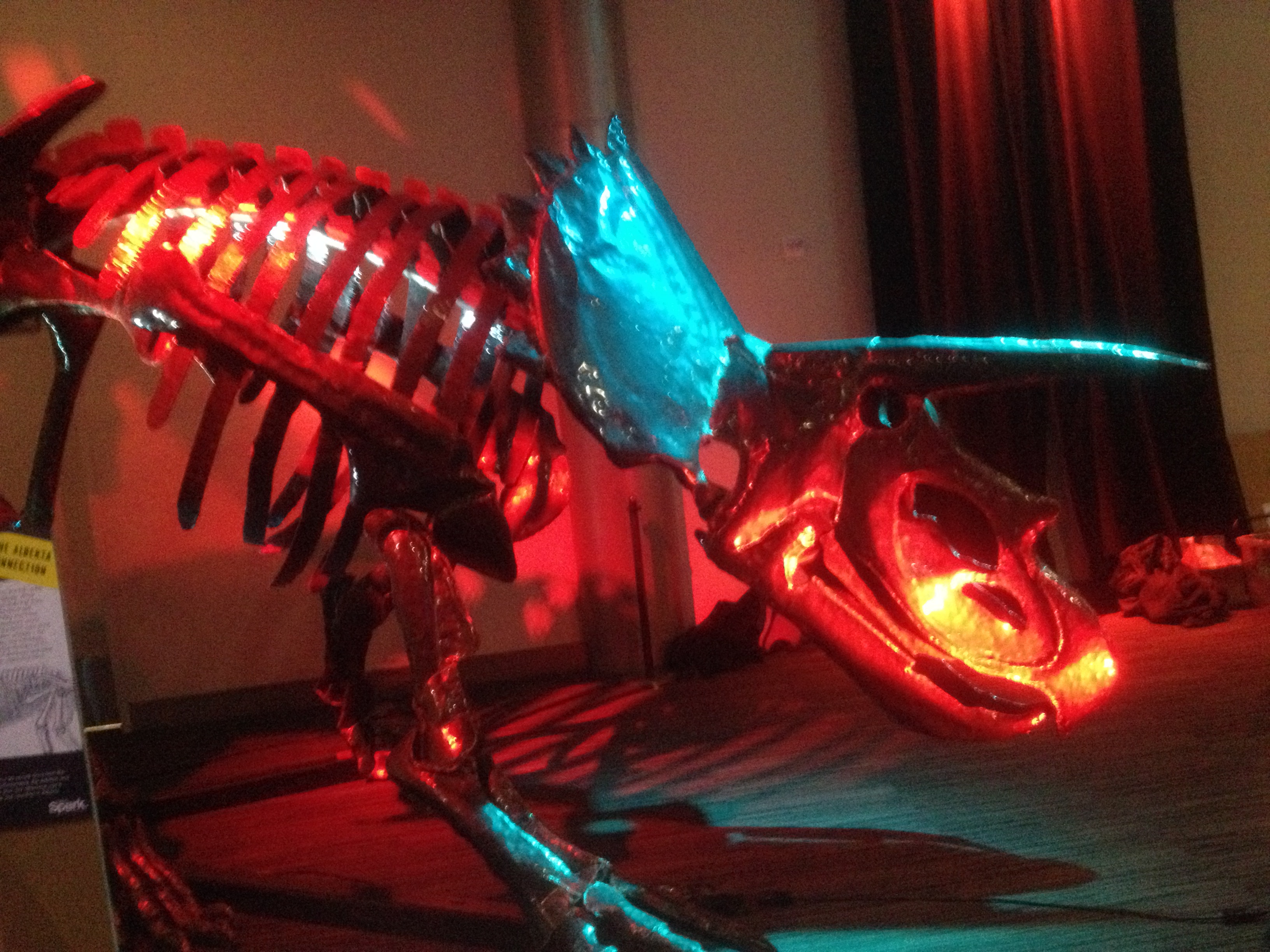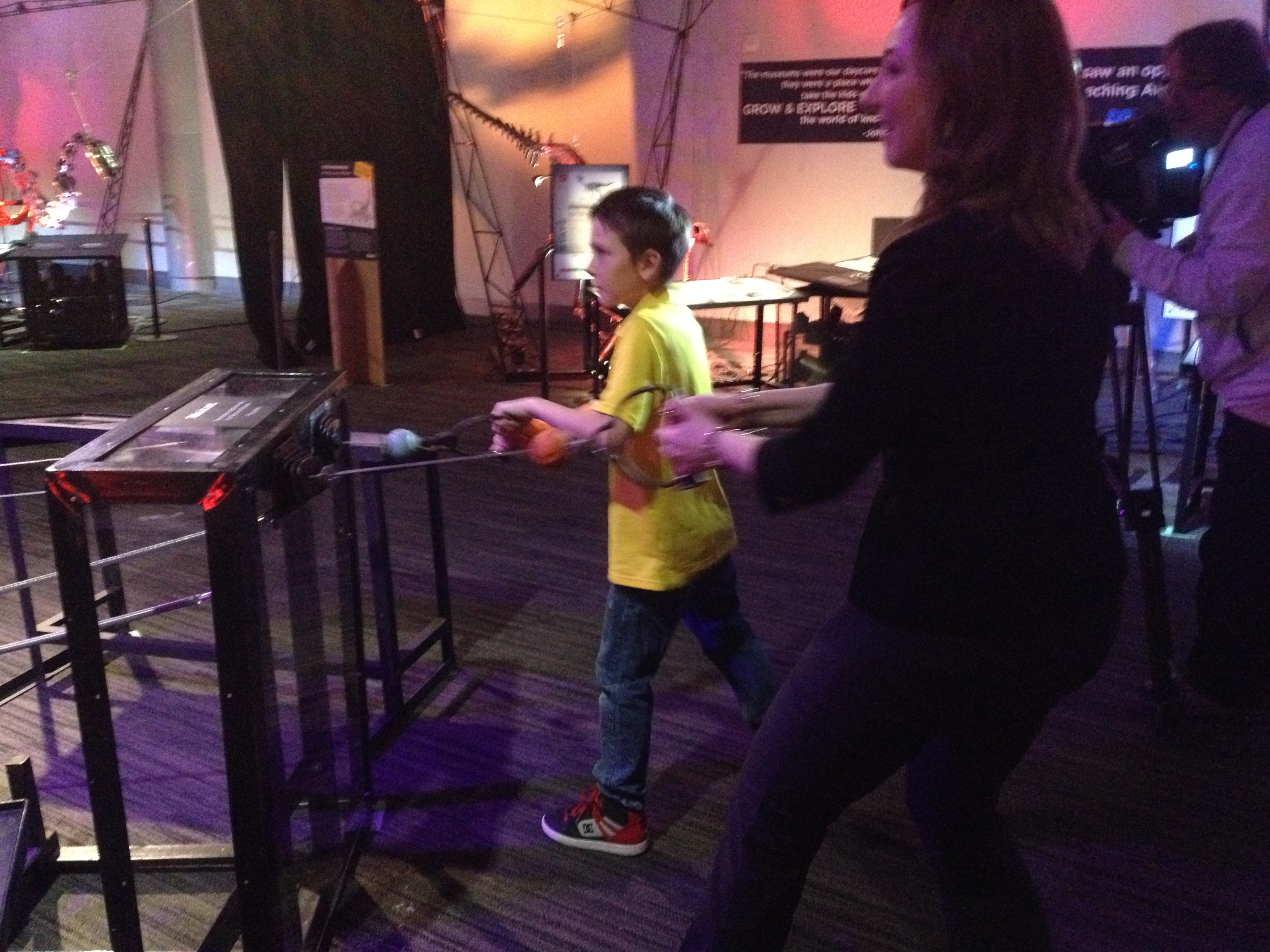The new year is well upon us, bringing us promises of change, rebirth, and… dinosaurs?

Telus Spark, Calgary’s one and only science center, opened its new “Dinosaurs in Motions” exhibit last weekend. Constructed by the late metal sculptor John Payne, this travelling exhibit combines the modern nostalgia of rusted metal and the imposing presence of prehistoric dinosaurs to create mind-boggling sculptures. Not only are the sculptures realistic and terrifying, most of them are actually interactive! The exhibit features 14 life-size kinetic sculptures made out of recycled metal that stays true to its name: visitors can use an assortment of levers and buttons to make the sculptures move and come to life. I had the opportunity to attend the exhibit preview the day before its opening; and to also have a chat with the exhibition staff and the CEO of Telus Spark, Jennifer Martin, about this fresh exhibit and what it means for Telus Spark and its visitors.
Once you step into the dimly-lit exhibition hall, you’re met with many inspirational quotes taken from the North Carolina sculptor, John Payne. A trained metal smith, Mr. Payne had always used recycled materials in his sculptures. His last creation, the “Kinetosaurs”, are a testament of what happens when art and science collide. The exhibition starts with two inanimate sculptures, an Ankylosaurus and a Triceratops. This is designed to showcase the evolution of John Payne’s vision of the Kinetosaurs. As you proceed deeper into the halls, the sculptures become more complex and intricate. From the T-Rex’s enormous jaws snapping with the pull of a giant lever, to an Ouranosaurus craning its neck around with the help of pulleys, you can see that John Payne’s craftsmanship grew bolder as time went on.

The exhibition staff present showed me around, explaining what each dinosaurs did in terms of movement and its niche during their time.
Eddy: What kind of knowledge are you instilling into the visitors’ minds when they visit this exhibit?
Exhibition Staff: Well one aspect is definitely the physics of these sculptures. Visitors, especially the kids, can learn the mechanics behind how these sculptures move. The second is of course teaching people about paleontology and the technicalities of dinosaurs. We also want to showcase the combination of art and science through these hulking metal creatures.. Everyone likes dinosaurs, right?
Indeed, each sculpture station has information about the actual dinosaur displayed and a miniature workshop that displays what kind of physics principle required to make the sculpture move; and the walls are lined with TV screens showing just how the individual sculptures are created.
Eddy: How long did it take for you to put together these sculptures?
Exhibition Staff: It’s actually not that complicated. Take the Triceratops. Its head is one complete piece, and so is its spine. The different parts are shipped to us, and it took us about a week to assemble ALL of these sculptures.

Eddy: What dinosaur sculpture in this exhibit is your favourite so far? Which dinosaur has caught your eye?
Exhibition Staff: The Twin Ornithomimuses. They’re just so small, and yet so vicious. It’s really cool to watch them jitter around and snap their jaws.
Couldn’t have said it better myself. Below is a video I recorded of these little guys in action.
*Remember to watch in 1080p!
After thoroughly enjoying being the puppet-master of these fascinating dinosaurs, I caught up with the CEO of Telus Spark, Jennifer Martin, for a chat.
Eddy: How do you hope to draw in the teenage demographics, specifically older youths, who are not that interested in dinosaurs anymore?
Martin: Well there’s also the art and the science aspect of the exhibit right? And I have to be honest with you, your demographic is the HARDEST one to reach. Therefore, I have to focus on the groups who actually going to buy the tickets and come to the shows. For example, for Junior Highs, we’re currently conducting programs at the schools instead of here at the center. There are also the Adult-Only Nights at the center where we can get an attendance of 1200-1600 people. So if I want to do an event for non-adults, if you will, young adults, from 16-17, it would also have to make economic sense.
Eddy: So you just hope that the teens will just tag along with their families when they visit?
Martin: Well it’s not that we don’t want to connect, we really do. It is just bottom-line, really tough. We’re fairly new, as we’re just in our fourth year. We have been treating this as a start-up business, in the sense that we have been trying to experiment with exhibitions. Is this the right exhibition that will appeal to family interests? In fact, we had an exhibition last year “Nature Unleashed”, and it didn’t capture the attention of the crowd quite as much; so we’re still learning, and we still need to figure that out.
Eddy: How do you think these interactive sculptures can help the visitors learn?
Martin: Well you use the interactions to engage the visitors. So there’s a three-step approach to this. First is “awareness”, it’s gotta be a compelling thing that has to capture your attention. Second is “engagement”, like what these levers and controllers are doing. Now that I’ve got you engaged, How can I help you learn something? People do not go, “Oh, I wanna go spend my day learning!”They don’t want to do it without some kind of incentive.

Eddy: I loved how you tied the exhibit to Alberta history, a majority of these dinosaurs have fossils that can be found in Drumheller.
After all, Alberta’s Drumheller was named the Dino Capital of the world, mainly because of it being an amazingly abundant source of highly diverse dinosaur fossils.
Martin: Well you know what? There was a little bit of luck in that. The dinosaurs that the artist, John Payne, chose to replicate just happened to mostly be Alberta Dinosaurs.
Before long, it was my time to leave the exhibit. I left with a sense of wonder and awe, plus a lingering and foolish desire to ride the metal T-Rex. I strongly recommend anyone reading this to visit the Telus Spark Center, not only for their amazing new “Dinosaur in Motion” exhibit, but also for their other intriguing and ingenious permanent exhibits. Telus Spark not only aims to fill the young generation with important knowledge, but more importantly, it provides the “spark” necessary to inspire. From just one dinosaur sculpture, it can drive someone to become a metal smith, a sculptor, or even a paleontologist. Take it from me, you’ll never believe what you can discover about yourself by visiting Telus Spark.
I will leave you with a quote from the brilliant sculptor John Payne.


